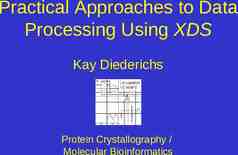Phased Array
25 Slides5.24 MB
Phased Array
Topics Introduction to Ultrasonic Phased Array New Techniques Industrial Applications Advantages Challenges The Future
What is Phased Array? Multi-element transducers and instrumentation Electrically steer and/or focus ultrasound
How does it work ? Transmission (Tx) Elements pulsed at controlled time intervals Control of beam direction and focusing The delays are known as Tx Focal Laws Beam Steering Wave front formed by constructive interference between wavelets Beam Focusing
How does it work ? (cont’d) Reception (Rx) RF waveforms received by each element are delayed, then averaged Delays used to align the signals Rx Focal Laws Ultrasound reflects from defect –Elements receive ultrasound at different times due to the different beam paths –Signals then aligned by electronic circuitry
How does it work ? (cont’d) Single point of focus What if the defect lies beyond the focus point ?
How does it work ? (cont’d) Solution Dynamic Depth Focusing Focal Zone Rx Focal Laws are modified for each element Result Extended Focal zone
How does it work ? (cont’d) Example - Dynamic Depth Focusing (DDF) Single Focus 25mm Single Focus 75mm Dynamic Focus 25 to 75mm Good Near Surface Poor Near Surface Good Near Surface Poor Backwall Good Backwall Good Backwall
Summary Transmitted (TX) ultrasonic beams can be electronically steered and focused Received (RX) ultrasound can also be steered and focused Focussing over an extended range, not only at a single point Dynamic Depth Focusing
New Techniques
Sectorial scan Multiple Focal Laws Beam is swept through many angles Wide coverage of the specimen Side Drilled Holes Backwall
Electronic / Linear scanning Each PRF cycle Aperture moves through the length of the array No raster movement required Full volumetric coverage achieved Each PRF cycle Aperture moves through the length of array No raster movement required Full volumetric weld coverage achieved
Linear scanning Physical scan movement in one axis only Full axial weld coverage achieved
Industrial Applications
Corrosion mapping - Aircraft Lap Joins Probe with flexible membrane – rides over rivets –detects corrosion under lap joints
Corrosion detection – inaccessible areas Inspect area under reinforcement plate Defect Geometry Reflections
Composite testing – Aircraft structure Composite Structure Honeycomb Core Disbond Disbond
Pipeline inspection – Zone Discrimination (AUT) Zone 1 Zone 2 Zone 3 Zone 4 Zone 5 Zone 6 Weld zoned - inspect with focused waves from both sides. (Up/Down stream) Fast, reliable weld inspection (ASME/ASTM/API compliant) Mechanics simpler & more reliable –Conventional UT 1 probe per zone –Phased Array 1 probe covers all zones
Pipeline inspection (Cont’d) Recording Threshold Shaded area shows TOF Colours indicate Above / Below Acceptance thresholds Amplitude Data Data from Up-stream Chanels Data from Threshold Down-stream channels breaking defects.
Pipeline inspection (Cont’d) Automated scanner incorporates TD Handy-ScanRX TD Focus-Scan mounted In vehicle
Complex geometries - Turbine blade root
Advantages One transducer covers many angles (improved coverage) Increased inspection speed Can produce Compression or Shear waves Greater resolution (improved flaw sizing) Much improved signal to noise ratio Increased penetration & sensitivity Improved POD Focus control (point & ddf) Improved visual representation (imaging)
Challenges Array footprint can be large Probe cable, very delicate Application / equipment set-up can be complex Trained / experienced personnel Applied application information
The Future of Phased Array Inspection Cheaper, faster, smaller instrumentation More qualified/experienced personnel Improvement of Codes & Standards Wider application of phased array UT Tools for application simulation
Thank you for your attention






























